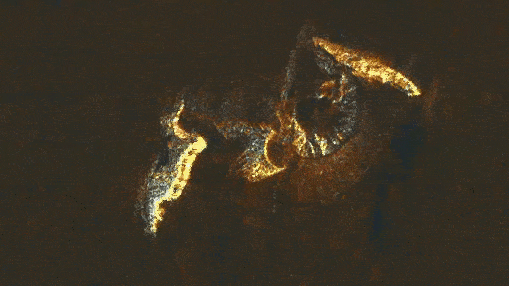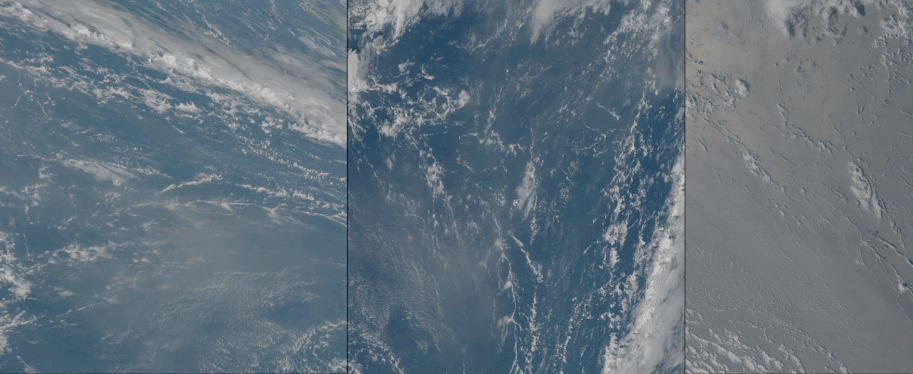Ash from Tonga volcano eruption reaches record altitude but climate cooling unlikely
The Tonga volcanic eruption was the most powerful our planet has experienced in 30 years.

The volcanic eruption that destroyed a small island in Polynesia on Saturday (Jan. 15) injected a huge amount of ash into a record altitude but won't cause any disruption to Earth's climate, experts said.
Satellites detected the ash cloud, which has already spread over Australia, at over 24 miles (39 kilometers) above Earth's surface, Oxford University research fellow Simon Proud said on Twitter on Monday (Jan. 17). This was the first time volcanic ash has been detected so high in Earth's atmosphere, he added.
"Based on analysis of data from global weather satellites, our preliminary data for the Tonga volcanic cloud suggests that it reached an altitude of 39km [24 miles]," Proud said. "We'll refine the accuracy of that in the coming days, but if correct, that's the highest cloud we've ever seen."
Scientists, however, think that the eruption won't affect Earth's climate. Despite the apocalyptic proportions of the blast, which was documented in real time by several satellites, the amount of ash it contained was relatively small compared to other cataclysmic volcanic eruptions known from previous centuries.
Related: Huge Tonga underwater volcano eruption captured in stunning satellite video

Not enough sulfur dioxide
Supervolcanoes like Tonga that spurt vast quantities of sulfur dioxide into higher layers of Earth's atmosphere can sometimes produce a measurable cooling effect on the planet's climate. This effect was detected, for example, after the 1991 eruption of Mount Pinatubo in the Philippines. This eruption, the second most powerful volcanic eruption of the 20th century, cooled down the planet in a way that was measurable for up to two years. But according to available data, Tonga blasted into the atmosphere only 400,000 metric tonnes of sulfur dioxide, about 2% of the amount of Mount Pinatubo.
"At this point the estimates of the amount of sulfur dioxide emitted by the Hunga-Tonga eruption is a small fraction of what was emitted by the eruption of Mount Pinatubo," Karen Rosenlof, an expert in atmospheric chemistry at the U.S. National Atmospheric and Oceanic Administration (NOAA), told Space.com in an email. "Because of that, I would not expect to see a significant global surface temperature response."
Get the Space.com Newsletter
Breaking space news, the latest updates on rocket launches, skywatching events and more!
Rosenlof added that even the Pinatubo aerosols only had a short-term impact, measurable for about a year or two, which means that the volcano is certainly not going to buy humans time in their battle against climate change.
The plume has already spread over Australia, more than 2,500 miles (4,000km) to the west of Tonga, producing record concentrations of sulfur dioxide above the Pacific Ocean, New Zealand's National Institute of Water and Atmospheric Research (NIWA), said on Twitter on Monday (Jan. 17). Sulfur dioxide is potentially harmful to human health, causing irritation of the respiratory tract and worsening conditions such as asthma. The gas can also react with water in the atmosphere and cause acid rains that harm vegetation.
Satellites bear witness
The eruption in the remote part of the South Pacific Ocean has already been well documented thanks to satellites orbiting Earth. The moment of the blast itself, creating a rapidly expanding bubble of dust and debris, was captured by three weather satellites sitting in the geostationary ring, an orbit at an altitude of 22,000 miles (36,000 km) where satellites appear suspended above a certain spot on Earth.
U.S. Earth-observation company Planet, as well as satellites of the European Earth-monitoring program Copernicus, photographed the ill-fated Hunga Tonga-Hunga Ha'apai island shortly before and shortly after the devastating eruption.
The island itself was fortunately uninhabited. It only formed in 2009 during an earlier volcanic eruption that merged two previously separated islands called Hunga Tonga and Hunga Ha'apai. The remnants of these two islands now again stand on their own in the ocean.
However, disaster responders are concerned about the impact of the tsunami triggered by the eruption on other islands of the Kingdom of Tonga. Occupying about 170 islands in the South Pacific Ocean, the Polynesian state straddles the tectonically precarious boundary between the Pacific and Australian plates. The kingdom's main island, Tongatapu, lies only 40 miles (65 kilometers) south of the volcano. The thick volcanic cloud produced by the eruption engulfed the whole region immediately after the blast, but the damage caused by the subsequent tsunami is still being assessed as the disaster disrupted local communication networks.
Images captured by satellites of U.S. company Maxar Technologies after the eruption suggest that the destruction may not be as extreme as the scale of the blast might suggest.
"New high definition before and after satellite images from Nukuʻalofa, the capital of Tonga, contain comparatively good news: Though there is obvious tsunami damage, most buildings appear to be intact, though covered in volcanic ash," Evan Hill, visual investigator at New York Times, who released the images on Twitter on Monday evening, said in a Tweet.
New high definition before and after satellite images from Nukuʻalofa, the capital of Tonga, contain comparatively good news: Though there is obvious tsunami damage, most buildings appear to be intact, though covered in volcanic ash.(📸: @Maxar) pic.twitter.com/Z6FqCtsTOqJanuary 18, 2022
Shockwave felt around the world
Speaking to Radio New Zealand on Monday (Jan. 17), University of Auckland volcanologist Shane Cronin said that the Tonga eruption may have been the most powerful Earth experienced since that of Mount Pinatubo in 1991. It was also the most powerful one for Hunga Tonga since about 1100 AD, Cronin told the New Zealand Media Center in a separate interview.
“The very large eruption of 15 January 2022 is remarkable due to the rapid lateral expansion of the eruption cloud (seen in satellite images), coupled with tsunami and atmospheric shockwaves," said Cronin. "This suggests the eruption of large volumes of gas-charged magma at Hunga volcano."
The shockwave produced by the eruption rippled through Earth's atmosphere at 680 mph (1,100 km/h), nearly the speed of sound, circling the planet twice within a day. Barometers detected pressure changes of 2 to 3 millibars all over Europe, according to the World Meteorological Organization, as a result of the passing shockwave.
In spectacular visuals, satellites watching over Europe and Africa distinguished the rebound of the atmosphere caused by the explosion on the other side of the globe.
Here’s another view of the atmospheric response to the Tonga eruption. This one gives a much clearer view of the pressure wave. Very much like a ripple in a pond 📷 Matthew Barlow pic.twitter.com/gHojYqBu50January 16, 2022
Emily Lane, an expert in hydrodynamics at New Zealand's National Institute of Water and Atmospheric Research, told New Zealand's Science Media Center that the sonic booms generated by the eruption could be heard as far as New Zealand, some 1,200 miles (1,900 km) away from the volcano. The tsunami generated by the eruption reached as far as the coast of Japan, Alaska and South America, the New Zealand's Media Center reported.
Cronin said that the volcano squirted some lava in late 2014 and early 2015, but the scale of that eruption was nowhere near this weekend's blast. He added the volcano might burp out more ash and gas, as well as lava, in the coming days and weeks. The new crater created by the eruption, the size of which has yet to be determined, might also collapse, triggering further tsunamis.
Follow Tereza Pultarova on Twitter @TerezaPultarova. Follow us on Twitter @Spacedotcom and on Facebook.
Join our Space Forums to keep talking space on the latest missions, night sky and more! And if you have a news tip, correction or comment, let us know at: community@space.com.

Tereza is a London-based science and technology journalist, aspiring fiction writer and amateur gymnast. Originally from Prague, the Czech Republic, she spent the first seven years of her career working as a reporter, script-writer and presenter for various TV programmes of the Czech Public Service Television. She later took a career break to pursue further education and added a Master's in Science from the International Space University, France, to her Bachelor's in Journalism and Master's in Cultural Anthropology from Prague's Charles University. She worked as a reporter at the Engineering and Technology magazine, freelanced for a range of publications including Live Science, Space.com, Professional Engineering, Via Satellite and Space News and served as a maternity cover science editor at the European Space Agency.









